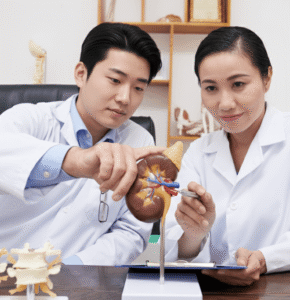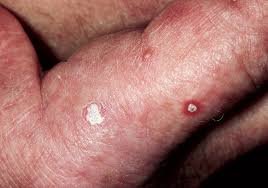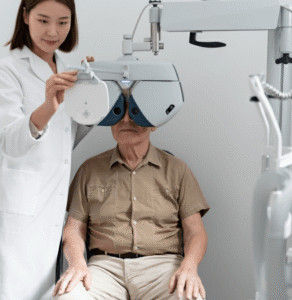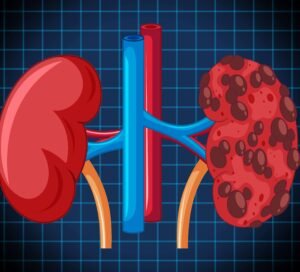Overview
Calf pain, commonly referred to as gastrocnemius or leg muscle pain, is a sensation of discomfort, stiffness, or cramping in the lower back portion of the leg between the knee and ankle. It can occur suddenly during activity or gradually over time, and may result from muscle strain, injury, circulatory issues, or underlying medical conditions. In Korea, hospitals and orthopedic clinics provide advanced diagnostics, physical therapy, minimally invasive treatments, and rehabilitation programs to manage calf pain effectively, ensuring quick recovery and preventing recurrence.
Key Facts
▶ Prevalence: Calf pain affects people of all ages, particularly athletes and older adults.
▶ Appearance: Pain can be sharp, dull, cramping, or throbbing.
▶ Causes: Muscle strain, dehydration, blood clots, nerve issues, or vascular problems.
▶ Associated Symptoms: Swelling, redness, stiffness, limited mobility, or warmth in the calf.
▶ Treatment Options in Korea: Physical therapy, medication, minimally invasive procedures, and lifestyle modifications.
What is Calf Pain?
Calf pain refers to discomfort or soreness in the lower leg muscles, typically involving the gastrocnemius, soleus, or surrounding tissues.
▶ Acute Pain: Sudden onset, often due to muscle strain, injury, or overuse.
▶ Chronic Pain: Persistent or recurring pain, sometimes associated with circulatory or nerve problems.
▶ Cramping (Charley Horse): Sudden, involuntary muscle contractions causing sharp pain.
▶ Inflammatory Pain: Resulting from infection, deep vein thrombosis (DVT), or systemic conditions.
Note: Accurate assessment of calf pain is essential, as it may indicate serious conditions like blood clots requiring immediate attention.
What Symptoms Are Related to Calf Pain?
▶ Localized Pain: Discomfort specifically in the back or sides of the calf.
▶ Swelling or Edema: Often indicates injury or vascular issues.
▶ Redness or Warmth: Signs of inflammation or possible infection.
▶ Muscle Cramping: Sudden tightening of calf muscles, especially at night or during exercise.
▶ Limited Mobility: Difficulty walking, running, or standing for long periods.
▶ Bruising: Visible after trauma or severe muscle strain.
▶ Numbness or Tingling: May indicate nerve compression or circulatory issues.
▶ Fatigue: Muscle weakness due to strain or poor circulation.
What Causes / Possible Causes
Calf pain can result from muscular, vascular, neurological, or systemic factors:
▶ Muscle Strain or Tear: Overstretching or excessive exercise causing acute injury.
▶ Cramps (Charley Horse): Often due to dehydration, electrolyte imbalance, or overuse.
▶ Deep Vein Thrombosis (DVT): Blood clot in the deep veins causing pain, swelling, and redness; a medical emergency.
▶ Peripheral Artery Disease (PAD): Reduced blood flow to the legs causing pain during walking or exercise.
▶ Nerve Compression: Sciatica or nerve entrapment affecting calf muscles.
▶ Infections: Cellulitis or localized bacterial infection causing swelling and tenderness.
▶ Chronic Conditions: Diabetes, varicose veins, or venous insufficiency.
▶ Medications: Certain drugs causing muscle cramps as a side effect.
▶ Trauma or Injury: Direct blow, fall, or accident leading to muscle contusion.
Note: Sudden, severe, or unilateral calf pain accompanied by swelling may indicate DVT, which requires immediate medical attention.
When Should I See a Doctor?
▶ Severe or Sudden Pain: Especially with swelling, redness, or warmth.
▶ Persistent or Recurrent Pain: Lasting more than a few days or interfering with mobility.
▶ Swelling or Edema: Suggestive of vascular issues or infection.
▶ Numbness or Tingling: May indicate nerve involvement.
▶ Bruising or Trauma: Pain following an injury requiring evaluation.
▶ Difficulty Walking or Standing: Limiting daily activities.
▶ Fever or Signs of Infection: Possible cellulitis or systemic illness.
▶ Risk Factors for DVT: History of blood clots, recent surgery, or prolonged immobilization.
Tip: Prompt evaluation in Korea ensures accurate diagnosis, effective treatment, and prevention of complications.
Care and Treatment
Management depends on the cause, severity, and duration of calf pain:
▶ Rest and Elevation: Reduces strain and swelling in acute muscle injuries.
▶ Ice or Heat Therapy: Ice for acute injuries; heat for chronic stiffness or cramps.
▶ Medications: Pain relievers, anti-inflammatories, or muscle relaxants as prescribed.
▶ Physical Therapy: Stretching, strengthening, and mobility exercises to prevent recurrence.
▶ Compression and Support: Use of compression socks or bandages for vascular conditions.
▶ Hydration and Nutrition: Adequate fluids and electrolytes to prevent cramps.
▶ Lifestyle Adjustments: Gradual exercise, proper footwear, and avoiding prolonged immobility.
▶ Monitoring: Regular check-ups to track recovery and detect complications early.
Treatment Options in Korea
Medical Evaluation:
▶ Orthopedic or Vascular Consultation: Comprehensive assessment of muscles, veins, and arteries.
▶ Laboratory Tests: Blood tests to check for clotting disorders or inflammation markers.
▶ Imaging: Ultrasound, Doppler studies, X-ray, or MRI to identify injury, vascular issues, or DVT.
▶ Electrodiagnostic Tests: If nerve involvement is suspected.
Advanced Therapies:
▶ Minimally Invasive Procedures: Thrombectomy or angioplasty for vascular blockages.
▶ Physical Rehabilitation Programs: Guided exercises and therapies for muscle recovery.
▶ Medication Therapy: Anticoagulants for DVT, anti-inflammatories, or targeted treatments for chronic conditions.
▶ Surgical Intervention: Rarely required for severe muscle tears, vascular obstruction, or nerve compression.
Rehabilitation & Support:
▶ Patient Education: Proper stretching, exercise routines, and lifestyle modifications.
▶ Follow-Up Care: Monitoring for recurrence, complications, or delayed healing.
▶ Specialist Clinics: Korean hospitals provide integrated care combining orthopedics, vascular medicine, physiotherapy, and patient support.
Outcome: With timely evaluation and comprehensive treatment in Korea, calf pain is effectively managed, mobility is restored, and long-term complications such as blood clots, chronic pain, or muscular weakness are minimized.













